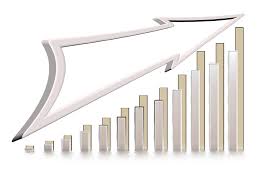See part 2 here:http://www.kataneh.com/index.php/2018/04/24/basics-of-macroeconomics-2/
These series of articles are for those intelligent group of people whose expertise are not economics or finance, but are still interested to understand the impact of macroeconomic monetary and fiscal policies such as interest rates, taxes or spending on the overall course of economy, their businesses, their employers, investments and of course their daily life.Therefore, in these articles, I have knowingly avoided using economic and finance terms and jargon, as much as possible.
The impact of different macroeconomics monetary and fiscal policies on each other, economy and growth are complicated and may cause vicious, benign or virtuous cycles. It is like a polynomial equation with many different interactive factors and coefficients. Changing the value of each factor and each coefficient will not only generate a different result, but may even change the value of some other factors in that same equation! And of course, changing one factor may generate multiple or totally different results for different values of another factor.
Knowing all those facts, in this article, discussion is kept very simple and to the point. At any time, we focus on one causal impact of one factor only if ALL other factors are assumed to remain constant.
Part 3- Interest Rates, Debt, Growth and Inflation
a- Imagine that you were unemployed, so, you couldn’t spend much. But all of a sudden you find a job, so, you start spending more, and to make things even better, your spouse gets 10% of raise. So, you will start spending even more and won’t care if you pay a bit extra. Exactly similar to this trend, when unemployment rate decreases and salaries increase, prices increase or inflate. So, the lower the unemployment rate is, and the higher the salaries are, the higher the inflation will be.
b- Now imagine that you borrowed $20,000 when the interest rates are 1%, and that you have the option of paying the interest only for as long as you wish. At 1% your annual payment will be $200. Now imagine that rates increase to 2%, which means that you need to pay $400 of interest rate, every year. Now, if your income grows as the interest rate grows, you shouldn’t have any problem with the extra payment. But if your income doesn’t grow at a comparable rate, you will have to either limit your other expenses, or withdraw from your savings to cover the higher rates, or in the worst case, default on your loan, and declare bankruptcy!
So, as interest rates increase, salaries should increase too, otherwise savings will decline, spending will decline, investments will decline, and finally people and businesses will default on their debt.
IF inflation is caused because of growth in salaries, rise of interest rates can be well tolerated. Otherwise, if inflation caused for other reasons, when salaries did not grow, there might be consequences.
C- Now imagine for example that the production of oil gets limited, while people still use the same amount of oil (demand doesn’t change). It means that because the supply of oil is lower, its price will go higher, or inflates. This is another scenario that ends up to inflation, but people’s income has not increased!
This means that inflation is because of limited supply, and not because of people’s higher purchasing power.
So, the more limited the supply is, the higher the price will be, and the higher the inflation rate will be.
The conclusion is, if lower unemployment rate and higher salaries improve people’s purchasing power, and cause price inflation, followed by rise of interest rates, inflation and rate increases are backed by growth. But if the inflation is because of limited supply, while demand is unchanged or higher, then inflation may not be healthy.
Summary of parts 1, 2 and 3:
Lower interest rates cause price inflation. To tame inflation interest rates should increase.
Higher interest rates encourage savings and limit spending. The higher the interest rates are the more interest banks pay on people’s savings.
The higher the interest rate is, the higher the value of the currency is, and therefore exports will decrease, but imports increase.
Inflation might happen because of higher purchasing power, but may also happen because of limited supply. The latter case might have adverse consequences.


One Reply to “Basics of Macroeconomics – 3”
Comments are closed.